Title II resources
Required reading and expertise at the ready for all your digital accessibility needs.
Talk to a Title II specialist
Must-have Title II compliance resources
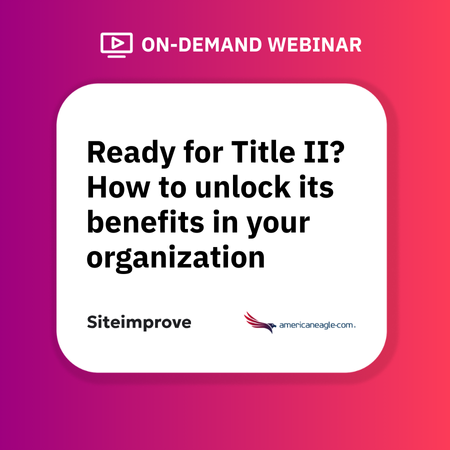
Digital accessibility isn’t just about meeting requirements—it’s about building better experiences for everyone. Get practical strategies to help you integrate accessibility into your organization’s everyday workflows.
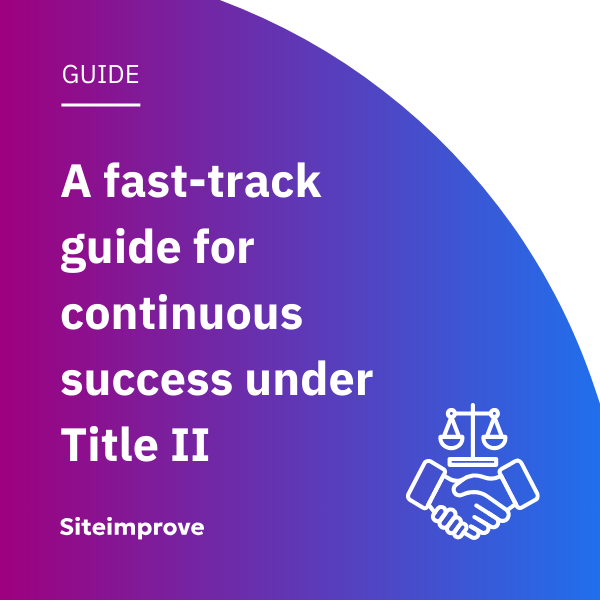
Optimizing your website for accessibility isn’t just about checking boxes—it’s about creating a smoother, more engaging experience for every visitor. This quick guide shows you how.
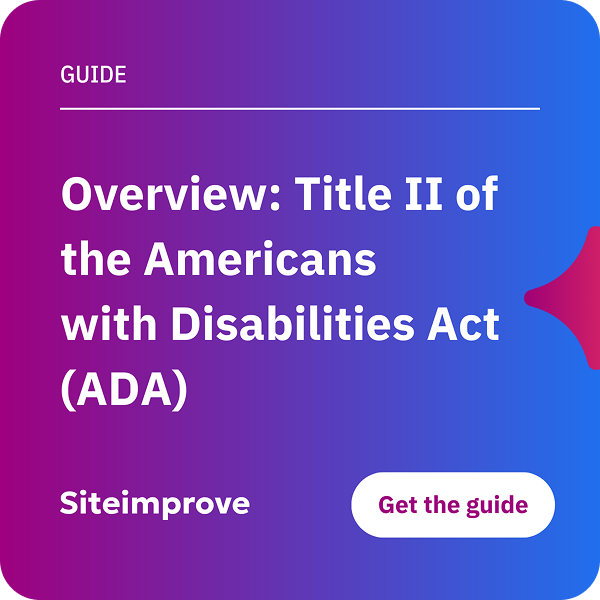
Get quick answers to your questions about Title II and what you need to do to comply.
Become more fluent about Title II
Your ultimate ADA Title II checklist
Ensure ADA Title II compliance with our detailed checklist, promoting accessibility and inclusion for all in digital and physical spaces.
Achieving ADA Title II website accessibility: A comprehensive guide
Ensure ADA Title II compliance by meeting WCAG 2.1 AA standards. Learn best practices and why a combination of manual and automated testing is your best bet.
How to bolster government website compliance with ADA Title II accessibility standards
Think your PDFs are ADA-friendly? (Spoiler: They're not). Get the scoop on government website compliance before 2026 catches you off guard.
How Siteimprove helps you comply
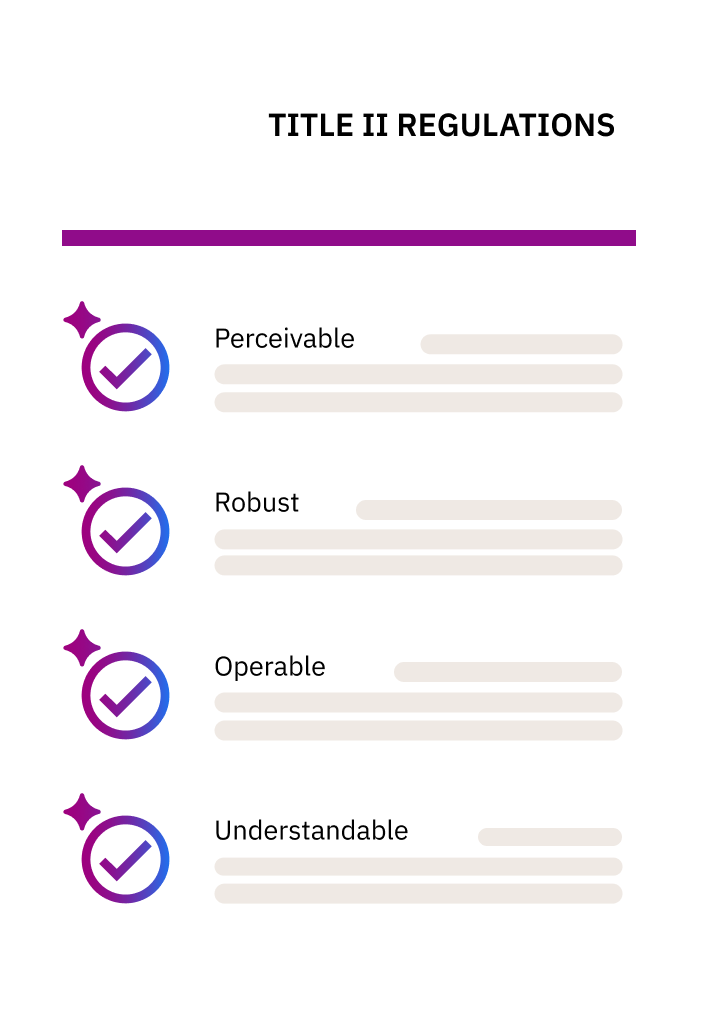
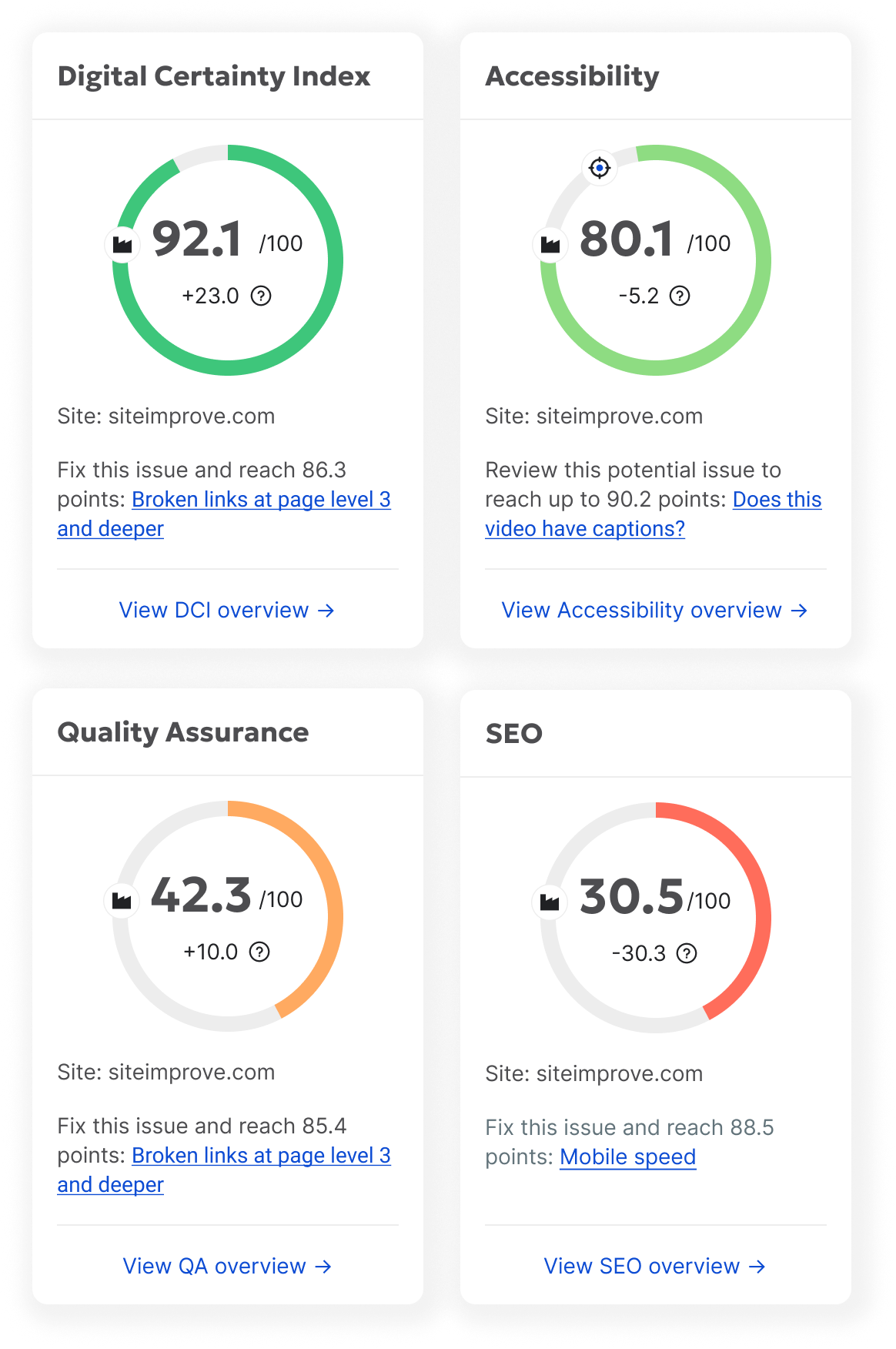
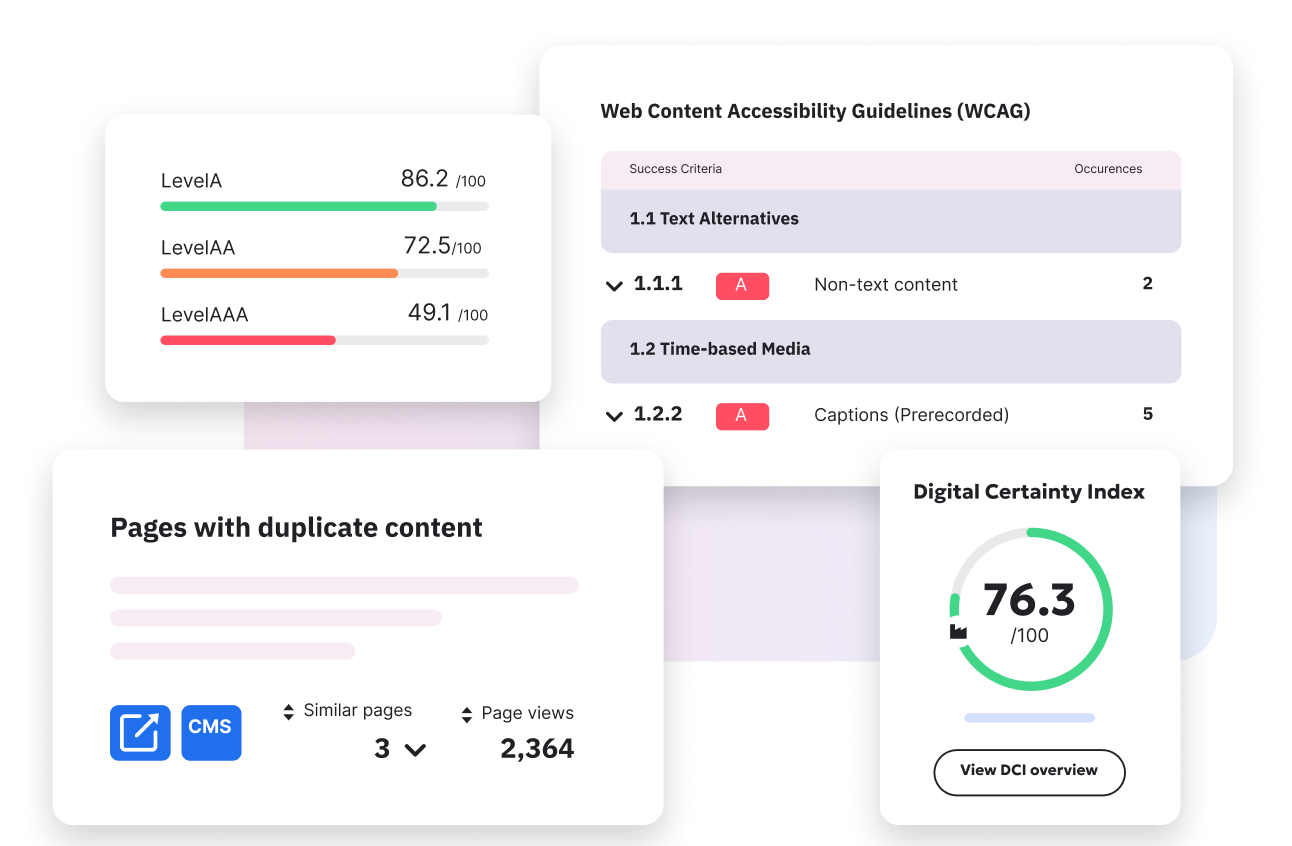
Our accessibility experts
Siteimprove's digital accessibility practice is robust and respected, partly because we're veterans in the field and partly because our accessibility experts are unmatched.

Christina Adams
CPACC, WAS, CPWA
Christina is manager of digital accessibility at Siteimprove and member of the International Association of Accessibility Professionals. She is a Certified Professional in Web Accessibility (CPWA), Certified Professional in Accessibility Core Competencies (CPACC) and Web Accessibility Specialist (WAS).

Tobias Christian Jensen
Tobias is senior technical program manager at Siteimprove and regularly leads workshops on digital accessibility training. An array of designers, developers, QA engineers, project managers, and business leaders across industries have relied on Tobias to guide them through the nuances and technicalities of digital accessibility and inclusive design.

Jean-Yves Moyen
As a Siteimprove principal software engineer, Jean-Yves is responsible for Siteimprove’s automated accessibility testing solution, including our Accessibility Checker. He also writes accessibility testing rules as part of the W3C community and has taught computer science at the University of Paris and the University of Copenhagen.
Talk to a Title II specialist
ADA Title II FAQs
Title II of the Americans with Disabilities Act (ADA) requires state and local governments, and any of their departments or agencies, to provide equal access to programs, services, and activities — including digital services like websites, forms, and documents.
All public entities at the state and local level, regardless of size, are covered. This includes schools, libraries, courts, transit authorities, public hospitals, and city or county governments.
Websites, mobile apps, PDFs, online forms, and multimedia content such as videos must all be made accessible to people with disabilities.
The Department of Justice (DOJ) has directed public entities to conform to the Web Content Accessibility Guidelines (WCAG) 2.1, Level AA as the standard for compliance.
DOJ’s Title II web accessibility rule takes effect in 2026, but agencies should start remediation now to avoid risk, spread out the workload, and ensure readiness before enforcement begins.
Non-compliance can result in DOJ enforcement actions, lawsuits, settlement agreements, reputational damage, and loss of public trust.
Begin with an accessibility audit to identify issues, create a remediation plan, and establish ongoing monitoring. Combining automated testing, manual audits, and user testing with people with disabilities is the best way to ensure long-term compliance.
